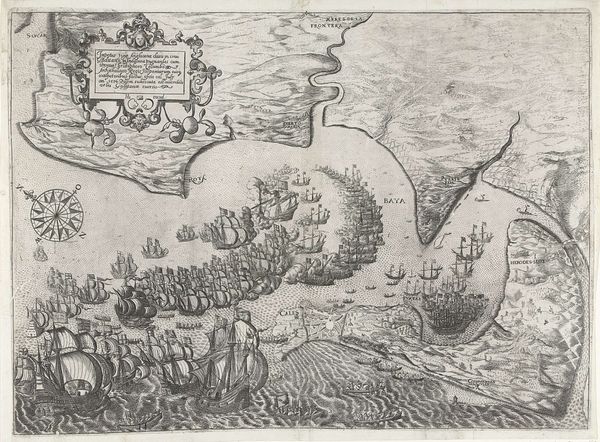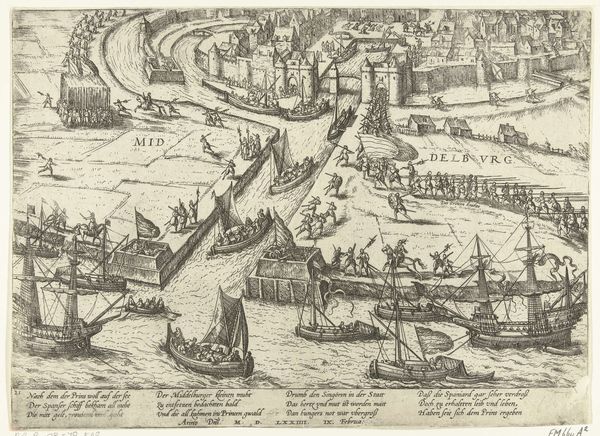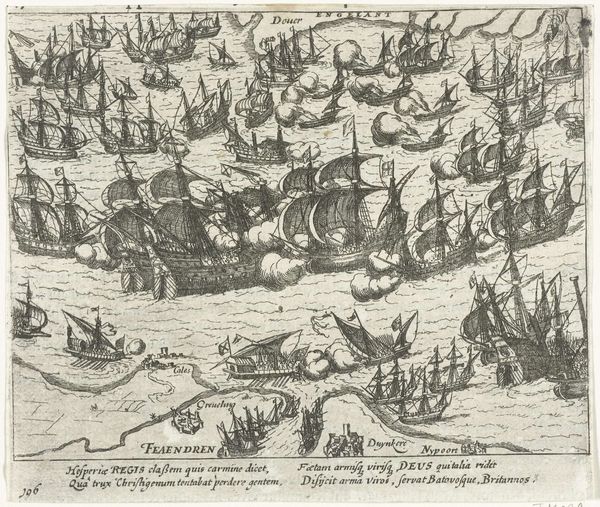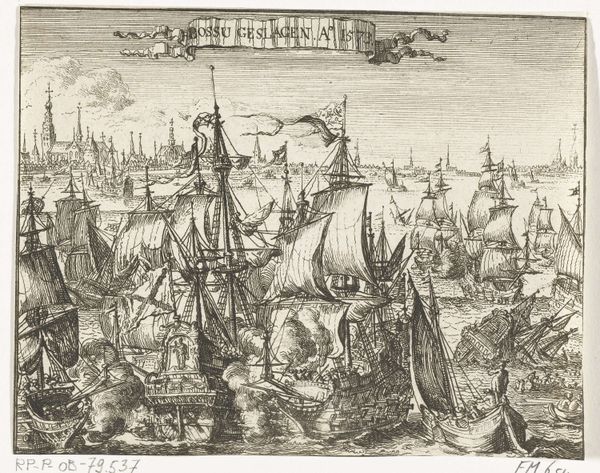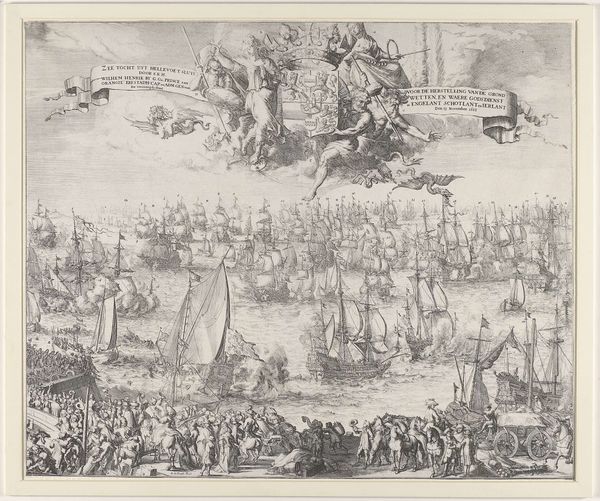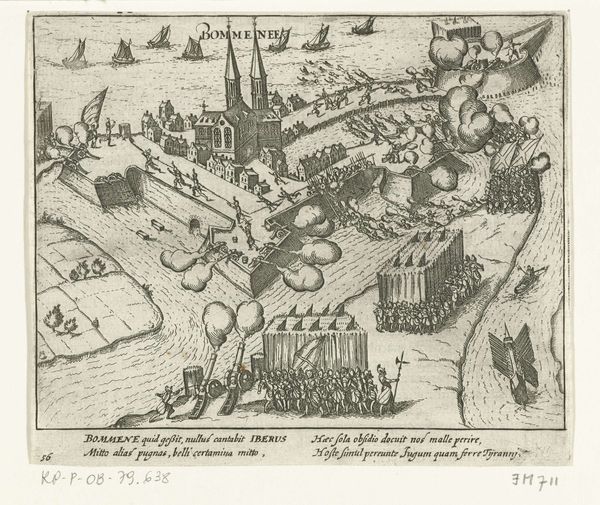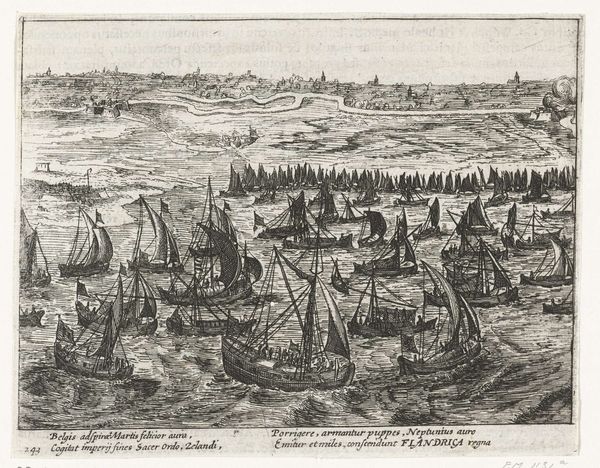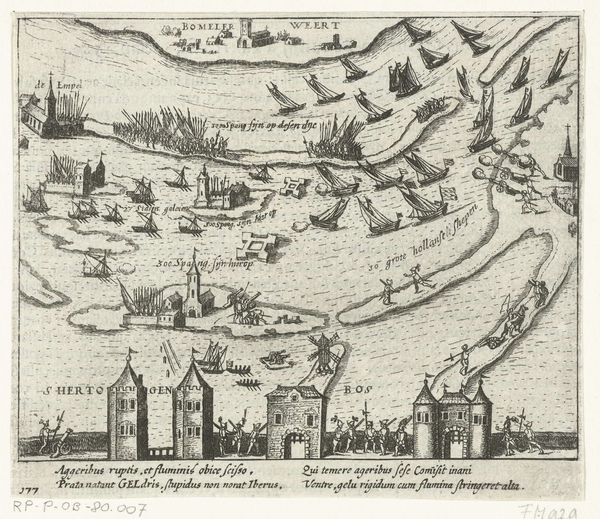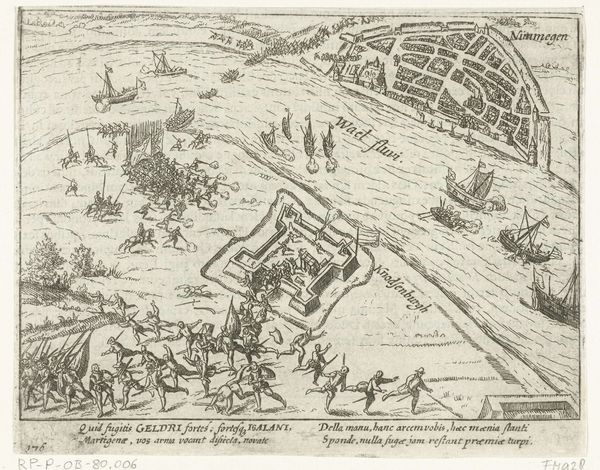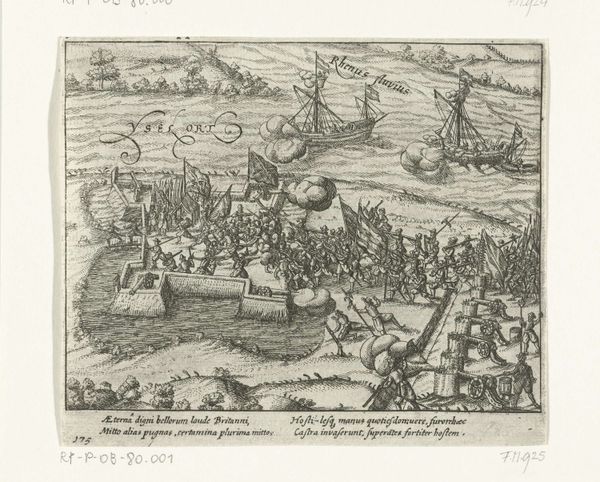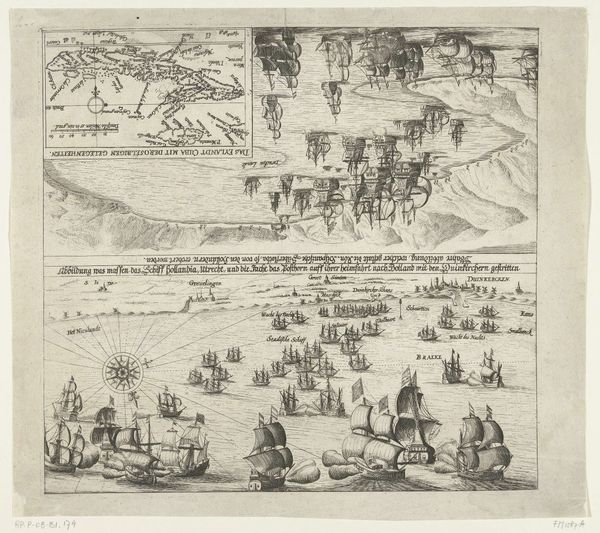
print, engraving
#
pen drawing
#
dutch-golden-age
#
mechanical pen drawing
# print
#
pen illustration
#
pen sketch
#
landscape
#
figuration
#
ink line art
#
line
#
cityscape
#
history-painting
#
engraving
Dimensions: height 133 mm, width 174 mm
Copyright: Rijks Museum: Open Domain
Curator: This engraving depicts the siege of Fort Rammekens in 1573. It's attributed to an anonymous Dutch artist, created sometime between 1613 and 1615. The level of detail, especially in the ships and fortifications, is really striking. Editor: The overwhelming sensation I get from it is dynamism. It feels busy and violent, doesn't it? A sense of clashing energies conveyed in those tight, insistent lines. Curator: Precisely. And within that apparent chaos, there’s a clear visual language. Consider the positioning of the fort – a stout bastion of defence – set against the fluid, almost restless sea. The lines carry symbolic weight, suggesting themes of control versus nature. Editor: And also power struggles, yes? Look at how the land and sea are crammed with bodies. The soldiers are tightly packed—it projects a palpable tension. It makes me wonder about the common soldier of this period and their perception of it all. Curator: Indeed. Also observe the flags flying above the fort – clear markers of territorial claim and political authority. But note, too, the smoke billowing from the cannons, obscuring those very symbols, an ephemeral quality, highlighting the impermanence of power in times of conflict. Editor: Those smoke clouds, they almost serve as a kind of baroque framing, chaotic framing device, underscoring the immediate brutality of war against this structured sense of place. Does this speak to the propagandistic function of the artwork in any way, to shape perception around this historical event? Curator: Possibly, yet this era prized factual accuracy too. The cityscapes, ships, and fortifications aren’t just generalized; there’s a distinct attempt to render the reality of that siege. Beyond simple propaganda, images like this served as crucial documents for understanding historical events. We shouldn't forget this served in early journalism to get accurate imagery into news, rather than just telling people by word of mouth! Editor: And it allows us now to appreciate how places, fortifications and military powers have changed throughout the ages. I found it surprising that such an old form of documentation is still of value today! Curator: The past speaks, always, if you listen carefully to its symbols.
Comments
No comments
Be the first to comment and join the conversation on the ultimate creative platform.
